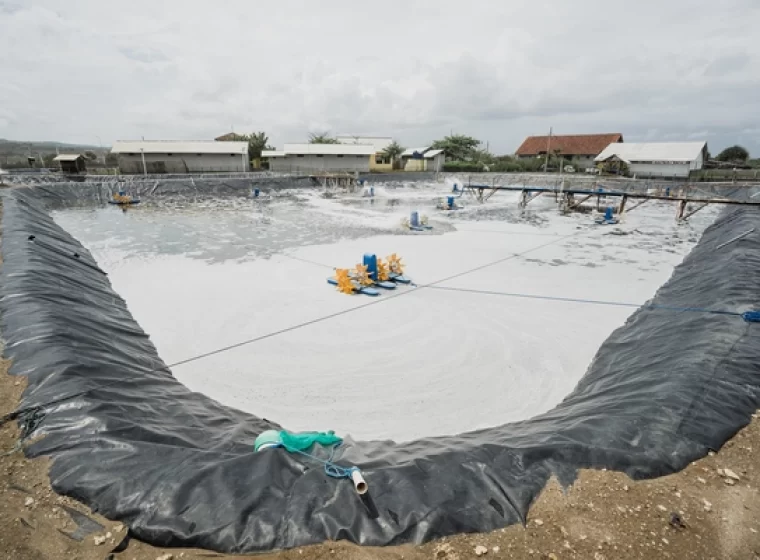Data analysis in shrimp farming can be the key to optimizing cultivation outcomes. By using quality data that has been analyzed, farmers can gain insights and recommendations to make more informed decisions.
In the world of vannamei shrimp farming, farmers often face various challenges, ranging from maintaining shrimp health to managing the cultivation process and meeting feed requirements in each pond. In facing these challenges, data analysis has become a highly beneficial solution. Through data analysis, farmers can gain a deeper understanding of pond conditions, shrimp health, and other factors affecting production.
To better understand how data analysis can shift the paradigm of vannamei shrimp farming, let’s explore further in this article!
Also Read: What Is MBW Term In Shrimp Farming and How To Calculate It?
Benefits of Data Analysis for Shrimp Farming
1. Environmental Optimization
Data analysis can assist shrimp farmers in optimizing their production. For example, by monitoring water quality parameters, farmers can obtain accurate data on the environmental conditions in the ponds.
This data can then be analyzed to identify anomalies, allowing farmers to take appropriate actions to maintain the ideal environment for shrimp.
2. Shrimp Health Monitoring
Shrimp health is a key factor in cultivation success. Healthy shrimp can yield maximum harvests. Therefore, data analysis can help shrimp farming avoid disease outbreaks and maximize harvests.
By applying data analysis to shrimp health data such as feeding patterns, growth, and behavior, farmers can detect early signs of disease or stress in the shrimp population. Thus, preventive actions or treatments can be taken promptly, reducing the risk of mortality and production losses.
3. Production Prediction and Feed Requirements
Farmers can use data analysis of shrimp production outcomes over time to identify seasonal patterns and other influencing factors. Thus, farmers can make more accurate production forecasts along with more efficient management strategy plans.
Additionally, by monitoring shrimp feeding patterns, farmers can be more efficient in providing shrimp nutritional needs and optimizing feed formulations required for shrimp growth and health, thereby making production costs more efficient.
Also Read: Water Quality Parameters in Shrimp Farms
4. Risk Management
External risks such as weather changes, fluctuations in feed prices, and potential shrimp diseases can also be addressed through pond data recording and analysis. By monitoring and analyzing data related to these risk factors, farmers can identify patterns and trends to develop more effective risk mitigation strategies.
5. Operational Efficiency Improvement
Data analysis can also assist shrimp farming in daily operational tasks, such as stock management, equipment maintenance scheduling, and labor management. This can help farmers reduce production costs, increase productivity, and enhance profits.
How Data Analysis Can Assist Shrimp Farming?
When engaging in vannamei shrimp farming, it’s important to remember that data analysis is a valuable tool. Although data analysis may not provide definitive answers on what to do or how situations will unfold in the future, it offers a clearer and more detailed view of the various factors influencing cultivation.
By using appropriate data analysis, farmers can extract valuable information from various data sources, such as weather, water quality, and other environmental conditions. Then, considering the findings from the analysis, farmers can make more informed and intelligent decisions in managing their vannamei shrimp farming. This means that data analysis not only enhances understanding of cultivation conditions but also enables farmers to take more strategic and proactive steps to ensure the long-term success of their endeavours.
Also Read: When is the Right Time to Change Shrimp Pond Water?
Record and Monitor Your Pond Water Quality with AquaHero!
Data analysis in shrimp farming can be the key to optimizing cultivation outcomes. Therefore, it’s important for farmers to record data throughout the cultivation process. For example, data on water quality parameters to shrimp feeding data.
To keep your pond water quality optimal and always under control, you can record and monitor it with AquaHero! AquaHero is a software developed by DELOS to facilitate you in monitoring shrimp pond conditions every day. From water quality, shrimp growth, action recommendations, to Break Even Point (BEP) estimation during cultivation.
Contact DELOS via contact@delosaqua.com or submit through our contact form at www.delosaqua.com to use AquaHero features. Choose AquaHero for your shrimp pond productivity!




